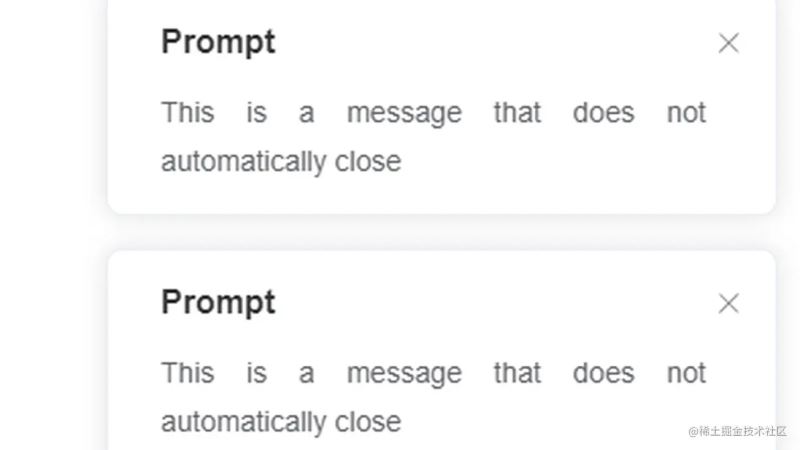vue3封装Notification组件
不会编程的xxk 人气:0
跳过新手教程的小白,很多东西都不明白,不过是为了满足一下虚荣心,写代码的成就感
弹窗组件的思路基本一致:向body插入一段HTML。我将从创建、插入、移除这三个方面来说我的做法
先来创建文件吧
|-- packages
|-- notification
|-- index.js # 组件的入口
|-- src
|-- Notification.vue # 模板
|-- notification.ts创建
用到h,render,h是vue3对createVnode()的简写。h()把Notification.vue变成虚拟dom,render()把虚拟dom变成节点。render在渲染时需要一个节点(第二个参数),创建一个只用来装Notification.vue的容器,我要的只是Notification.vue里面的HTML结构,所以创建了container先将vm变成节点,也就是HTML,这样才能插到body中
import { h, render } from "vue"
import NotificationVue from "./Notification.vue"
let container = document.createElement('div')
let vm = h(NotificationVue)
render(vm, container)懵逼点:为什么.vue文件在App.vue中能渲染出来,在这里需要先转成虚拟dom再转成节点
插入
通过document.body.appendChild把这个节点内的第一个子元素插入body中,这样就能在页面上显示出来了。
document.body.appendChild(container.firstElementChild)
移除
vue不能直接操作dom,只能操作虚拟dom了,用null覆盖掉原来的内容即可
render(null, container)
没懂vue实现原理也只是把效果做出来而已,网上查阅资料也差不多一个月了才做出来,看来我确实不适合编程
完整代码
// Notification.vue
<template>
<div class="notification">
Notification
<button @click="onClose">x</button>
</div>
</template>
<script setup lang="ts">
interface Props {
onClose?: () => void
}
defineProps<Props>()
</script>有个疑问为什么.vue文件在app中又能直接被渲染出来
// notification.ts
import { h, render } from "vue"
import NotificationVue from "./Notification.vue"
const notification = () => {
let container = document.createElement('div')
let vm = h(NotificationVue, {onClose: close})
render(vm, container)
document.body.appendChild(container.firstElementChild)
// 手动关闭
function close() {
render(null, container)
}
}
export default notification在App.vue中使用
// App.vue
<script setup lang="ts">
import {
BNotification
} from "../packages"
BNotification()
</script>总结
加载全部内容